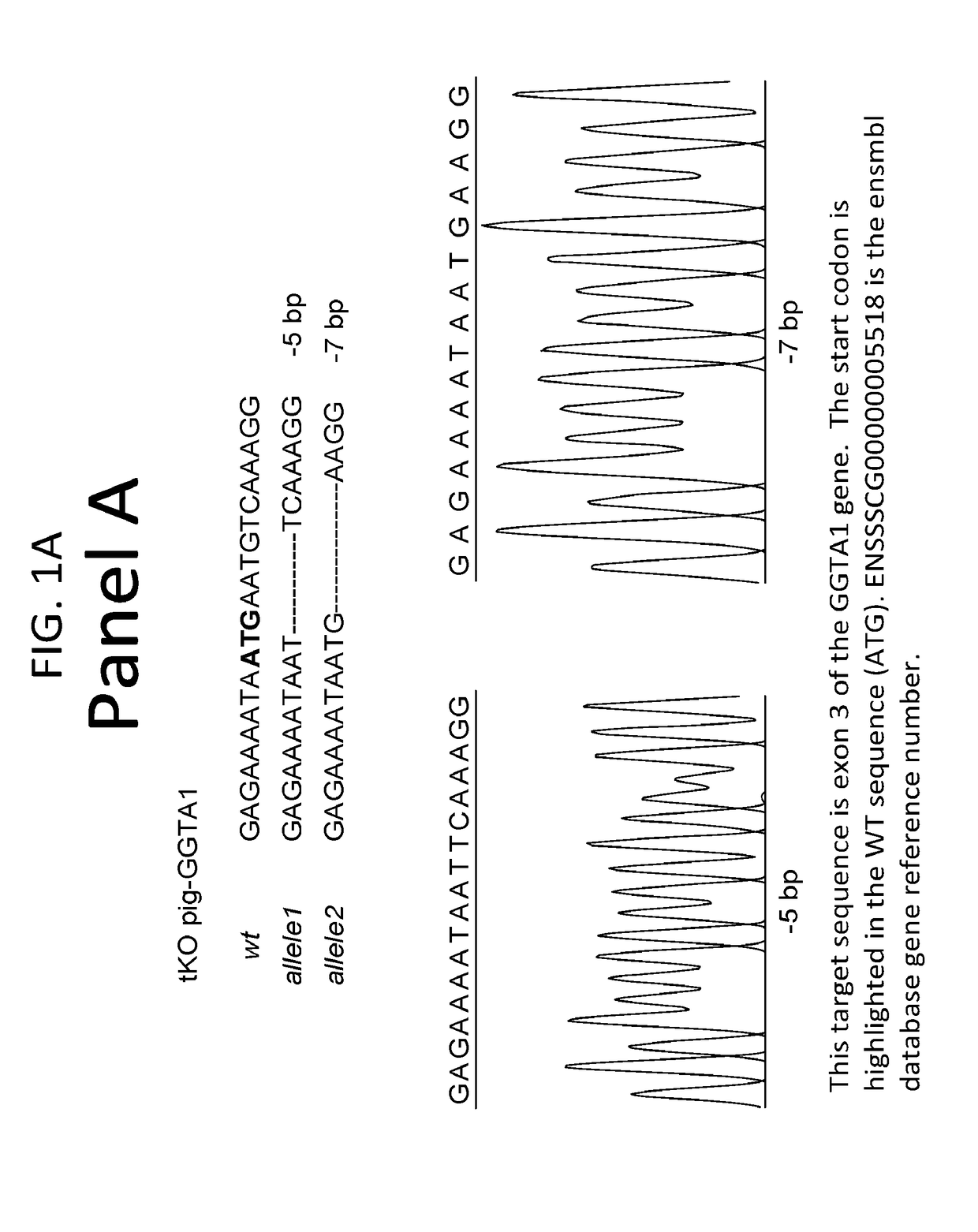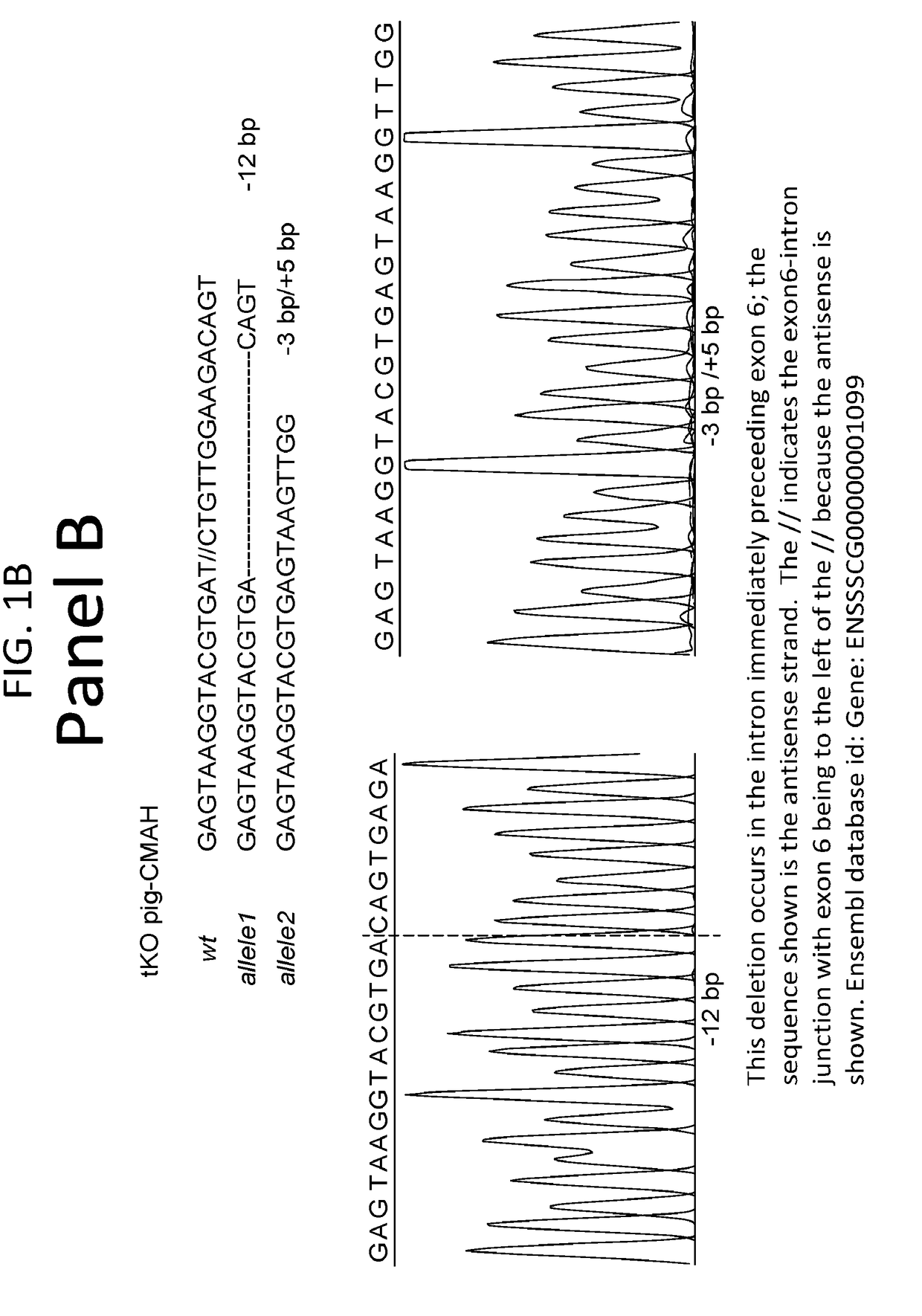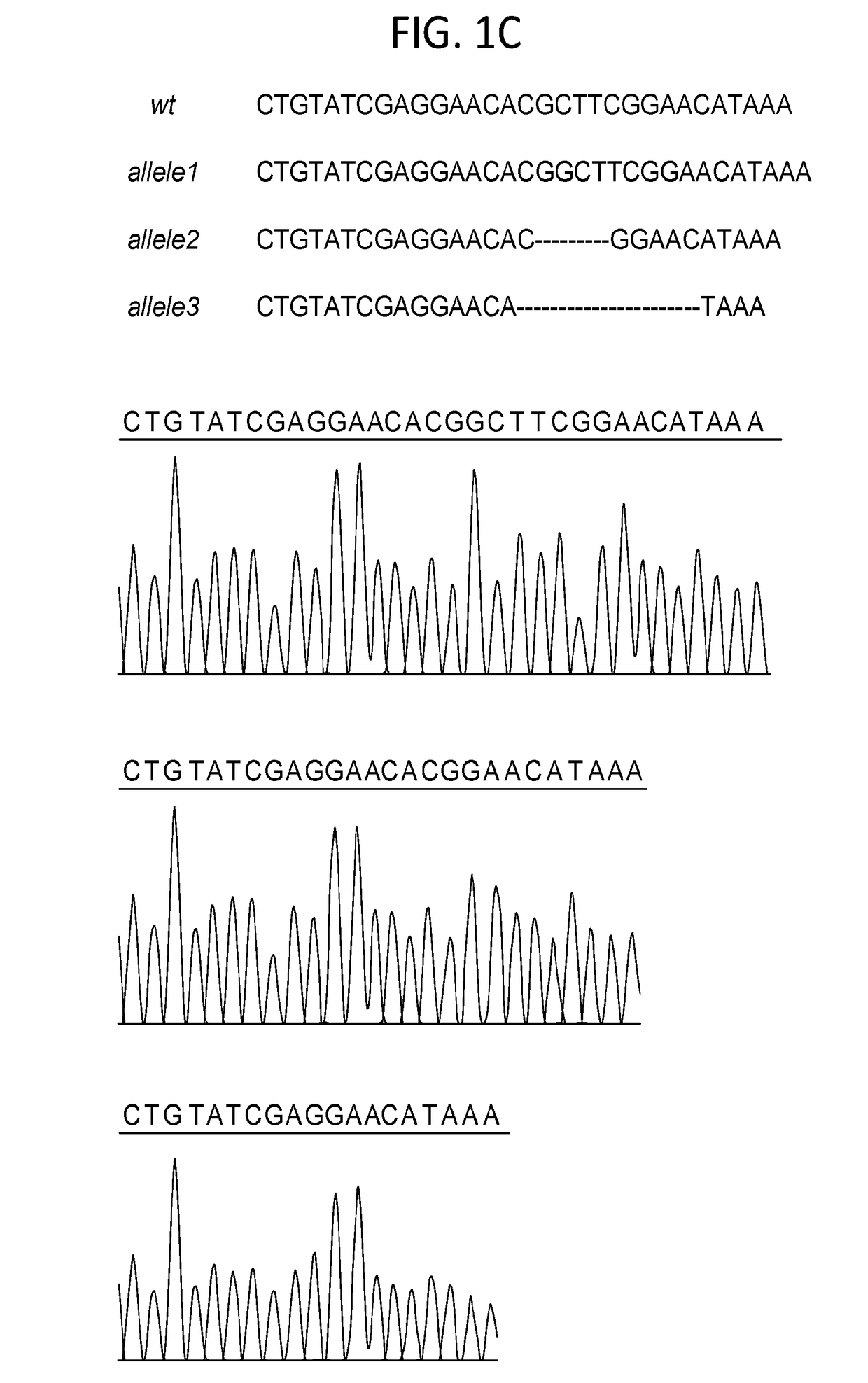Triple transgenic pigs suitable for xenograft
- Summary
- Abstract
- Description
- Claims
- Application Information
AI Technical Summary
Benefits of technology
Problems solved by technology
Method used
Image
Examples
example 1
ncing Analysis of Targeted CMAH, GGTA1 and B4GalNT2 Regions
[0094]Genomic DNA from a cloned pig was extracted using GenElute Mammalian Genomic DNA Miniprep Kit (Sigma-Aldrich, St. Louis, Mo.). PCR amplification of the CMAH, GGTA1 and β4GalNT2 Crispr / Cas9 target regions was performed. Primers were used to sequence the targeted CMAH, GGTA1 and β4GalNT2 regions.
[0095]Pwo Master (Roche, Indianapolis Ind.) was used, Pwo SuperYield DNA polymerase, dNTPack (Roche Applied Science, Indianapolis, Ind.) was used. PCR conditions for GGTA1 were as follows: 94° C., 2 min; 94° C., 15 sec, 54° C., 30 sec, and 72° C., 45 sec for 15 cycles; 94° C., 15 sec, 54° C., 30 sec, 72° C., 45 sec with additional 5 sec each cycle for 25 cycles; and a final extension step of 72° C. for 5 min. For CMAH, 94° C., 2 min; 94° C., 15 sec, 56° C., 30 sec, and 72° C., 45 sec for 15 cycles; 94° C., 15 sec, 56° C., 30 sec, 72° C., 45 sec with additional 5 sec each cycle for 25 cycles; and a final extension step of 72° C. f...
example 2
n of Knockout Pigs (Triple Transgenic Pigs)
[0097]Oligo annealing and cloning into the PX330 plasmid to drive gRNA expression was performed using Addgene plasmid 42230 [http: / / www.addgene.org / 42230 and 20]. Oligo pairs for the targeted genes are GGTA1 (NCB1 Accession: XM_005660398.1), 5′CACCGAGAGAAAATAATGAATGTCAA-3′ forward) (SEQ ID NO:8), 5′AAATTGACATTCATTATTTTCTC-3′ (reverse) (SEQ ID NO:9); CMAH (NCBI Accession: NM_001113015.1) 5′-CACCGAGTAAGGTACGTGATCTGT-3′ (forward) (SEQ ID NO:10), 5′-AAACACAGATCACGTACCTTACTC-3′ (reverse) (SEQ ID NO:11; 64GalNT2 (NCBI Accession: NM— 001244330.1) 5′-CACCGTGTATCGAGGAACACGCTT-3′ (forward) (SEQ ID NO:12), 5′-AAACAAGCGTGTTCCTCGATACAC-3′ (reverse) (SEQ ID NO:13).
[0098]Liver-derived cells were cotransfected with all three gRNA / Cas9 plasmids. After 48 hr, the treated cells were passed over an IB4-lectin column to isolate α-Gal null cells. Two million α-Gal negative cells were further stained with fluorescein labeled Dolichos biflorus Agglutinin (DBA)-FIT...
example 3
erselection of Triple Knockouts
[0101]Liver-Derived Cells (LDCs) were transfected with three sets of targeting constructs (αGal, β4GalNT2 and CMAH). Cells were selected with IB4, a substance that binds αGal. DNA from cells in the bulk population of cells that survived IB4 counterselection was obtained, and the target gene sequences were evaluated. The bulk population cells that survived IB4 counterselection were used directly in SCNT to make pregnant pigs.
PUM
 Login to View More
Login to View More Abstract
Description
Claims
Application Information
 Login to View More
Login to View More - R&D
- Intellectual Property
- Life Sciences
- Materials
- Tech Scout
- Unparalleled Data Quality
- Higher Quality Content
- 60% Fewer Hallucinations
Browse by: Latest US Patents, China's latest patents, Technical Efficacy Thesaurus, Application Domain, Technology Topic, Popular Technical Reports.
© 2025 PatSnap. All rights reserved.Legal|Privacy policy|Modern Slavery Act Transparency Statement|Sitemap|About US| Contact US: help@patsnap.com



